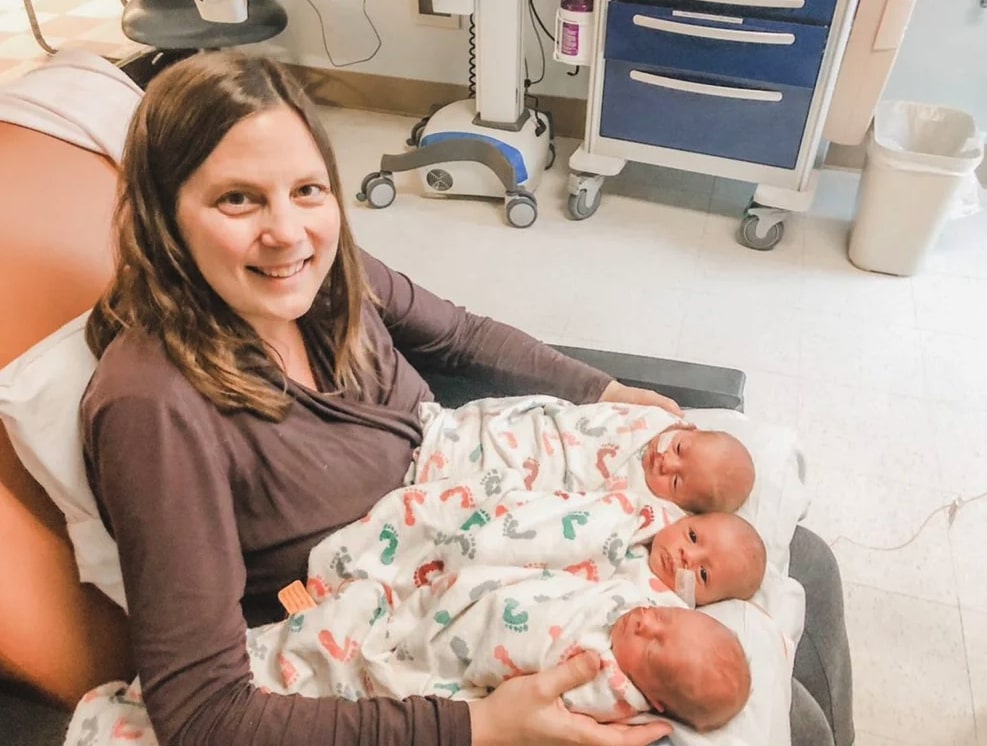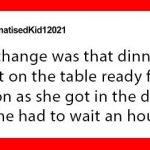Genevieve “Genna” Knox was taken aback when she became pregnant at the age of 39. The surprises didn’t stop there. Her singleton pregnancy resulted in triplets.
The first twist occurred during her 20-week prenatal scan, when the ultrasound technician abruptly became quiet and said is she carrying twins? Knox replied stating a no but when she looked up, it was shown very clearly.
Knox, a fifth-grade teacher in San Diego, California, says that she chose not to have nuchal translucency testing, often known as an NT scan, during her first trimester. Knox had received thorough prenatal tests due to her advanced maternal age.
After all of her blood testing came back normal, my doctor asked whether she wanted to wave the nuchal, and she answered, ‘Oh, absolutely.’
Knox says she and her husband, Kyle, who have a 6-year-old son named Liam, seemed like the luckiest individuals in the world when they found out they were having multiples.
She started having children later in life, and wasn’t sure whether she’d even be able to have one, she explains. They were ecstatic.
And perhaps a little concerned about logistics.
The Knoxes chose to receive memento four-dimensional ultrasound scans in a non-medical environment nine weeks later. They weren’t looking for a diagnosis; they just desired some detailed photos to present to their family.
Knox recalls the sonographer sliding the wand across her stomach. It went on for so long that she became concerned.
The sonographer then revealed that Knox was expecting triplets.
On March 21, 2019, Knox gave birth to three daughters, Kaylee, Lily, and Cecilia, at 33 weeks gestation. The girls were in the newborn intensive care unit (NICU) for a few weeks but are now in preschool and doing well.
Hidden triplet syndrome is “not as rare as you would expect,” according to Dr. Sean Daneshmand, director of Maternal-Fetal Medicine at Scripps Clinic in La Jolla, California.
When the infants are extremely young, one baby can hide behind the other, explains Knox’s doctor, Daneshmand. Generally, around 26, 27, 28 weeks — the baby that has been missed will come unexpectedly.
Dr. Ashley Roman, head of Maternal Fetal Medicine at NYU Langone Health, believes that the best time to determine how many babies a woman is carrying is between 8 and 10 weeks. Knox declined the NT scan during her first trimester.
As the baby grows larger, the amount of information the ultrasound probe can view is restricted by the size, Roman states. While they can identify specific organs, beyond around 15, 16, weeks, it’s difficult to see the entire baby in one look. Missing a second or third fetus becomes a bit easier as time goes on.
However, it is still rare, she continued. Especially because ultrasonic technology is at its peak.
Knox describes Cecilia as the most difficult of the “hidden triplets.”
She has a huge personality, Knox says. She is entertaining, and all adore her, however she clearly marches to the beat of her own drum.
Knox’s tale became popular on TikTok, with over one million views after she shared it.
@knoxedoutnumbered Wait for it… #triplets #pregnancy #pregnancystory ♬ original sound – TheQuiteFranklyShow






